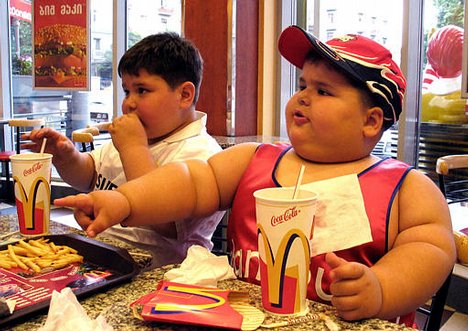 Stop the presses: Zoning is the answer to childhood obesity!
Stop the presses: Zoning is the answer to childhood obesity!
“Ninth graders whose schools are within a block of a fast-food outlet are more likely to be obese than students whose schools are a quarter of a mile or more away.” (New York Times quoting University of California/Columbia University study of millions of school children; article below.)
Said Kelly Brownell of Yale University, “Zoning laws that prohibit fast-food restaurants near schools are absolutely indicated, and neighborhoods that choose to zone out fast-food restaurants are probably taking a step to protect the future health of their children.”
While I deeply believe in individual responsibility, I agree with Brownell that it behooves us as a society to make healthy choices easy and available and bad choices more difficult. I find the more I put on my plate, the more I tend to eat and the longer I stay at the table, the more I tend to eat. That’s why I prefer to use a small salad plate and to avoid long, multi-course dinners.
—– New York Times Article —–
 Proximity to Fast Food a Factor in Student Obesity
Proximity to Fast Food a Factor in Student Obesity
By RONI CARYN RABIN
New York Times
Published: March 25, 2009
Ninth graders whose schools are within a block of a fast-food outlet are more likely to be obese than students whose schools are a quarter of a mile or more away, according to a study of millions of schoolchildren by economists at the University of California and Columbia University.
The study, a widely circulated working paper of the independent National Bureau of Economic Research, marks an intensive effort by economists to determine whether close geographic proximity to fast food plays a causal role in obesity.
The sample population was large, spanned almost a decade and included such detailed geographic information that researchers were able to observe obesity rates among ninth graders in the same school in the years before and after a new fast food outlet opened nearby.
After adjusting for a wide range of variables, including income, education and race, the researchers found that obesity rates were 5 percent higher among the ninth graders whose schools were within one-tenth of a mile of a pizza, burger or other popular fast-food outlet, compared with students attending schools farther away from fast-food stores.
“I think we got as close to proving causation as any other study has, and probably as close as is feasible with the existing data,” said Enrico Moretti, a professor of economics at the University of California, Berkeley, and one of the paper’s authors. “We’re quite confident that these are credible and unbiased estimates of the causal effect of fast food on obesity for the group we focused on.”
Professor Moretti said it was not clear from the results why only students in such close proximity to fast food were affected.
“It could be that students don’t like to wander too far,” he said. “Maybe they don’t have a long lunch period. Maybe it’s just the effect of having temptation right in front of your eyes.”
A National Restaurant Association spokeswoman said the paper was a “slapdash” piece of work that was flawed because it did not take individual diet and exercise into account.
Another arm of the study analyzed data on millions of pregnant women who gave birth in New Jersey, Michigan and Texas over the course of 15 years. After adjusting for a number of variables, the researchers determined that women who lived within a half-mile of a fast-food restaurant were at increased risk of gaining more than 44 pounds during a pregnancy, compared with those living farther away.
Since many of the women went on to have another child, the economists were also able to document increased weight gain during a subsequent pregnancy, after a new outlet had opened nearby.
Kelly Brownell, director of the Rudd Center for Food Policy and Obesity at Yale University, said the study offered proof that fast-food restaurants contributed to the obesity problem, especially in children, and had implications for public policy.
“Zoning laws that prohibit fast-food restaurants near schools are absolutely indicated, and neighborhoods that choose to zone out fast-food restaurants are probably taking a step to protect the future health of their children,” Mr. Brownell said.


0 Comments